MATTERS OF OBSESSION
This world that we live in: Meschac Gaba on globalisation, citizenship, and value
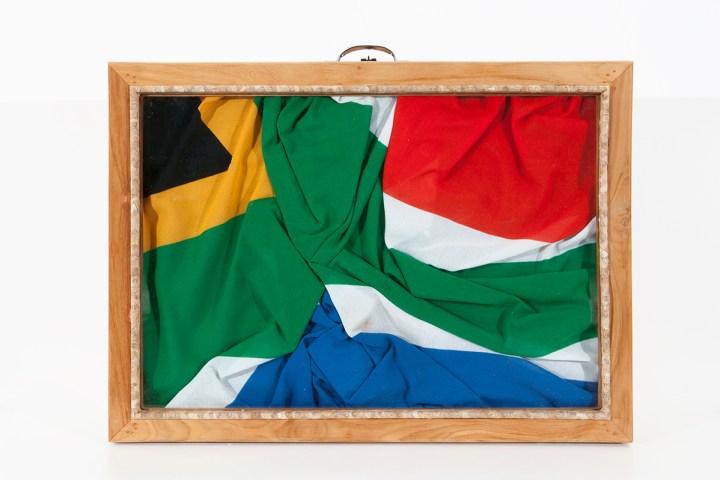
Citoyen du Monde, at the Stevenson Gallery, Cape Town, is the second exhibition in a two-round retrospective on Meschac Gaba, prolific Beninese artist whose ruminations on what it means to be a global citizen seem exceedingly poignant in the midst of a global pandemic.
Entering the gallery space that houses Citoyen du Monde, one is almost immediately confronted by the Globalloon. Impressively sized (just about scraping the ceiling of Stevenson Gallery, Cape Town, and spanning at least a quarter of the room), the immense plastic globe is loud in both its bright veneer and its sonic presence. The noise of the pump that keeps it round and full of air is reminiscent of primary school birthday parties and the promised fun of a bouncy castle. Its low rumble can be heard from every corner of the gallery.
This is fitting because the world seen by Meschac Gaba, the conceptual artist behind the work featured in this ambitious survey show (and its prequel, Money Money Money) is a playful place. Gaba’s sense of humour and his remarkable way of looking at and beyond the ordinariness of everyday life with a refreshing awe is just the perspective necessary to tackle the monolithic topics that fall under the umbrella of globalisation.
The Globalloon is a case in point. It was “made using the design from an artwork called Citoyen du Monde (Citizen of the World.)” Marc Barben, director at Stevenson Gallery Cape Town, explains.
In the original work, Gaba took the image of every single national flag in the world and elongated each into a narrow triangle. The triangles all connect on a central point, creating a new flag that is an amalgamation of every nation.

Globalloon, 2013. Image: © Meschac Gaba. Courtesy of Stevenson, Amsterdam, Cape Town and Johannesburg.
Gaba writes that it is “symbolic of a togetherness that can resolve the difficulties and crises that proliferate across our world. The singularity of each flag is lost in the rhythm of the composition, as is the case with countries in the age of globalisation where the national is absorbed into the international.”
That we are all citizens of the world is no longer a debatable topic. It’s clear in the use of services provided by international corporations like Uber, in small details like the ubiquity of English Premier League followers (and associated paraphernalia), and in the very nature of the internet and social media, among countless other things.
“It’s been amazing to see how many people have been queuing to take Instagram pictures of this thing,” says Barben, in reference to the Globalloon. “It in itself is snowballing, becoming a spectacle on social media.” And it’s done so in other places, too, displayed first at the 2013 Art Basel fair in Switzerland, and to be shown “in a monastery in the Netherlands later this year,” Barben shares. The Globalloon, and its bouncy-castle-hum of togetherness has gone global.
Fantastic. Alas, and Gaba understands this, things are not as simple as that. Of course, there are downsides to the inevitable reality of globalisation, some of which have become far clearer and arguably more sinister in the light of the current global pandemic (whose very existence is a testament to the interconnected world that we live in.)
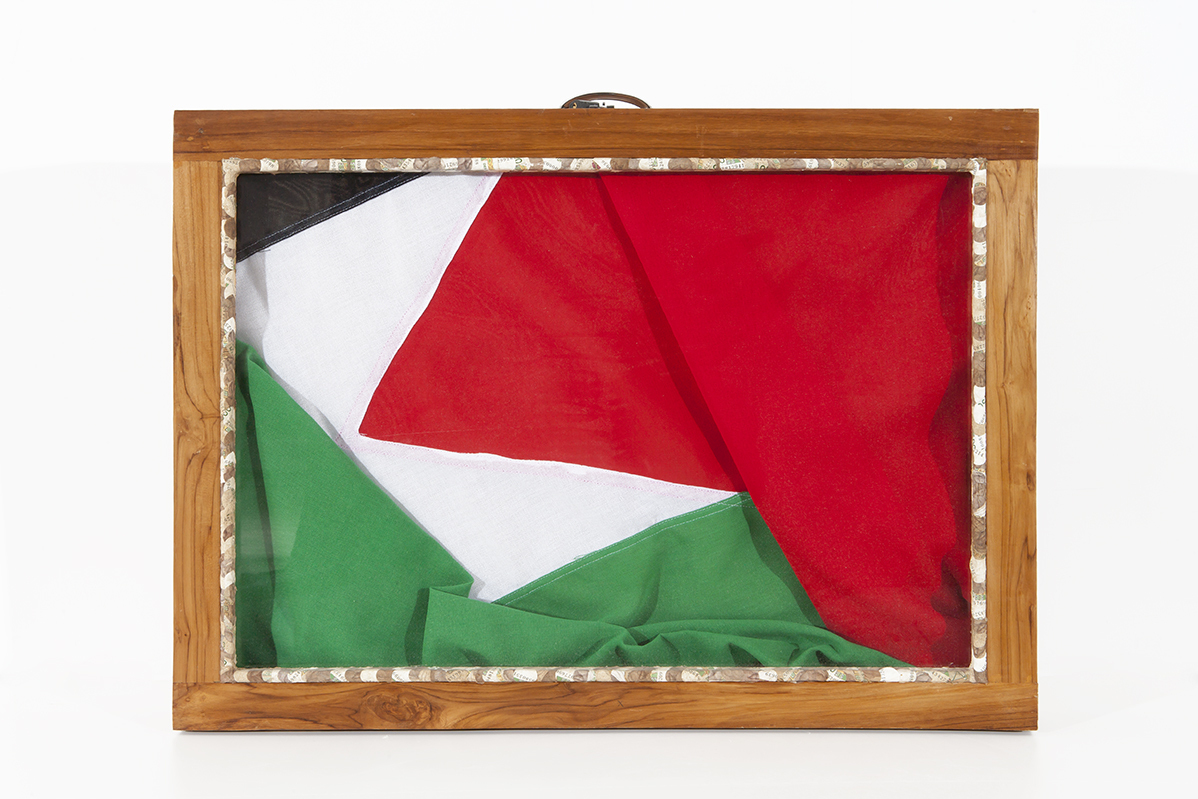
Diplomatique (Palestine), 2008. Image: © Meschac Gaba. Courtesy of Stevenson, Amsterdam, Cape Town and Johannesburg.
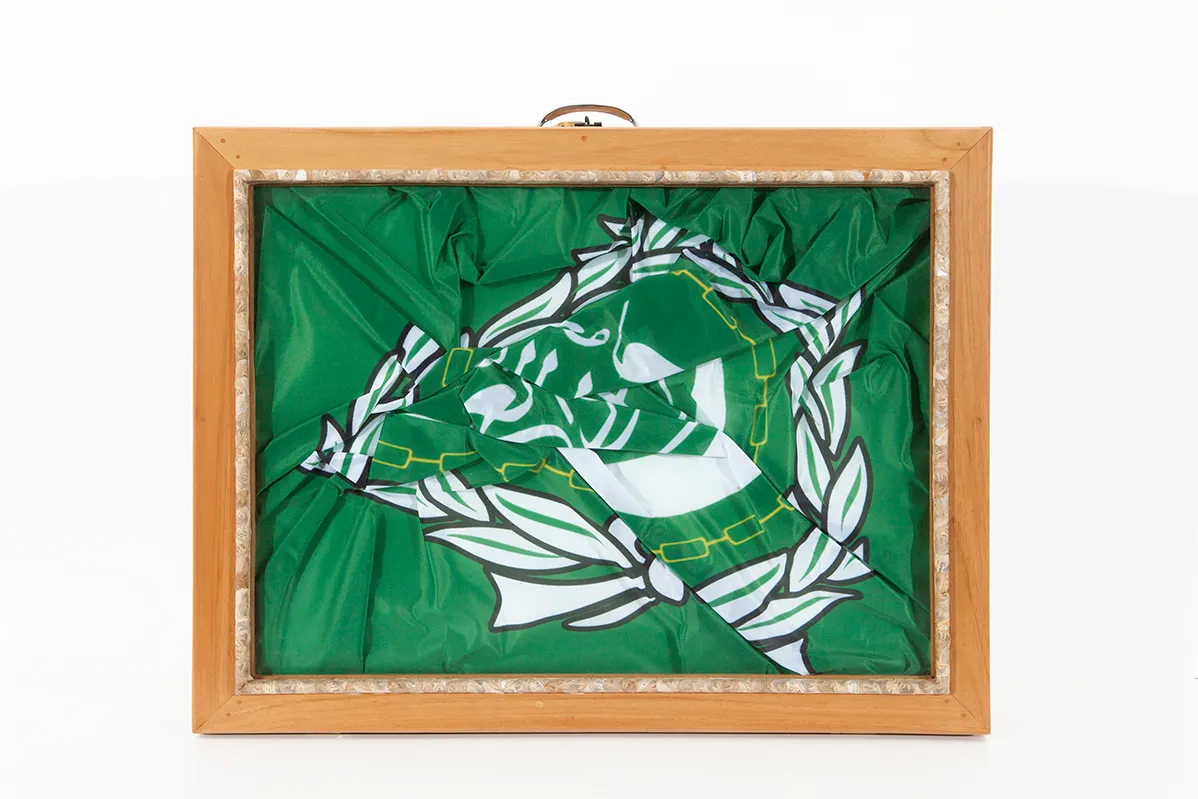
Diplomatique (Ligue Arabe), 2013. Image: © Meschac Gaba. Courtesy of Stevenson, Amsterdam, Cape Town and Johannesburg.
In a way, there is a strange contradiction in the contemporary moment: we are irreversibly part of the globalised world, yet under the current constraints of the pandemic it is harder than ever to travel.
Barben shared the experience of how difficult it was, physically, to put the show together given lockdowns and closed borders that continue to plague the world (pun fully intended). “For the previous show we were able to get some incredible work from one of his [Gaba’s] other galleries, In Situ — Fabienne Leclerc, in Paris. This was the luck of getting things out literally hours before France imposed another lockdown.”
Here in South Africa, we are currently red-listed from a wide range of countries, including Vietnam, Israel, the UK, Dubai, and various parts of Europe, due to the Covid-19 Beta variant that popped up in the later months of 2020. We are banned from these spaces, and potentially moving towards a third wave with the hope of vaccinations, and government measures to control Covid becoming an embarrassing scandal. Meanwhile, in other parts of the world, like the US, the number of vaccinated people are rising swiftly, and things are returning to normal.
Which brings us to an unavoidable reality: a globalised world does not mean an equal one. As citizens of the world, we are, and have been for centuries, on totally unequal footing; the Global North (West) takes centre stage in many aspects (like the world economy, cultural hegemony etc.) while the Global South, egregiously, lives somewhat in its shadow.
This is very apparent in the art world itself, where, historically, Art of the Global North has been celebrated and hailed as superior for centuries. The art history canon is undeniably swayed towards Western artists and their work.
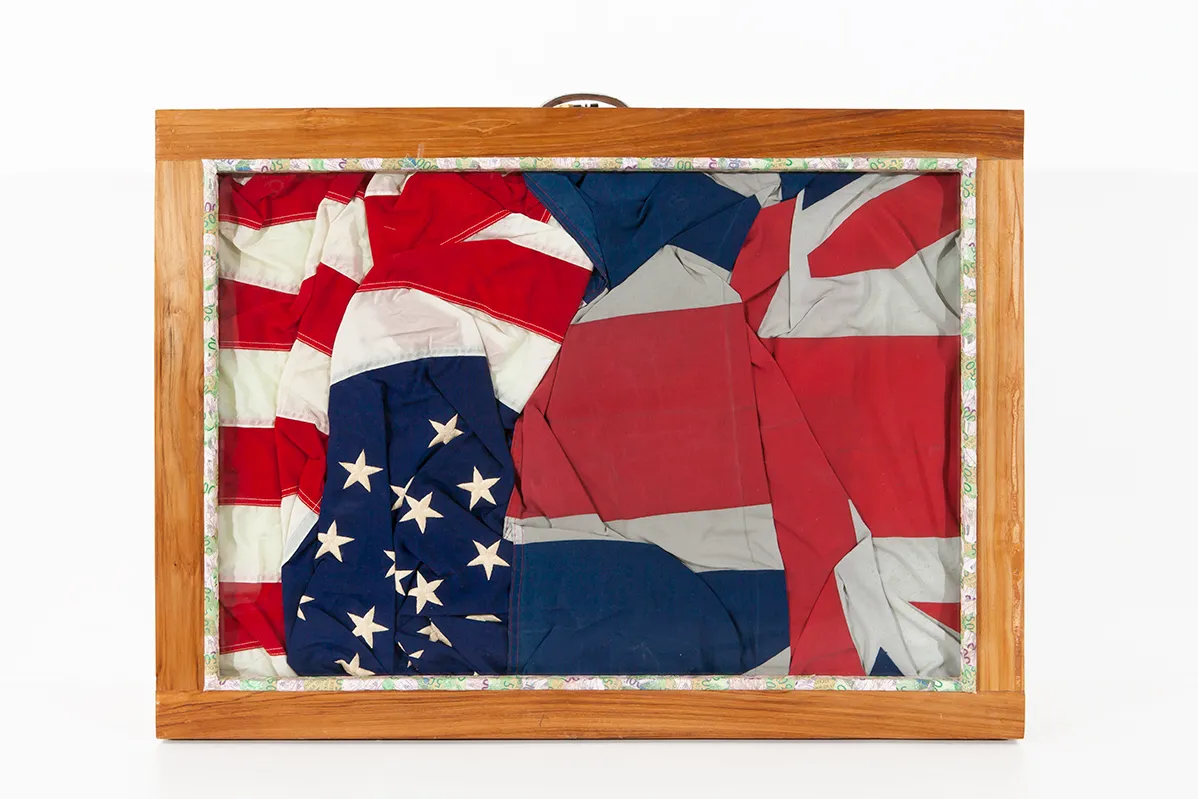
Diplomatique (United States Union Jack), 2013. Image: © Meschac Gaba. Courtesy of Stevenson, Amsterdam, Cape Town and Johannesburg.
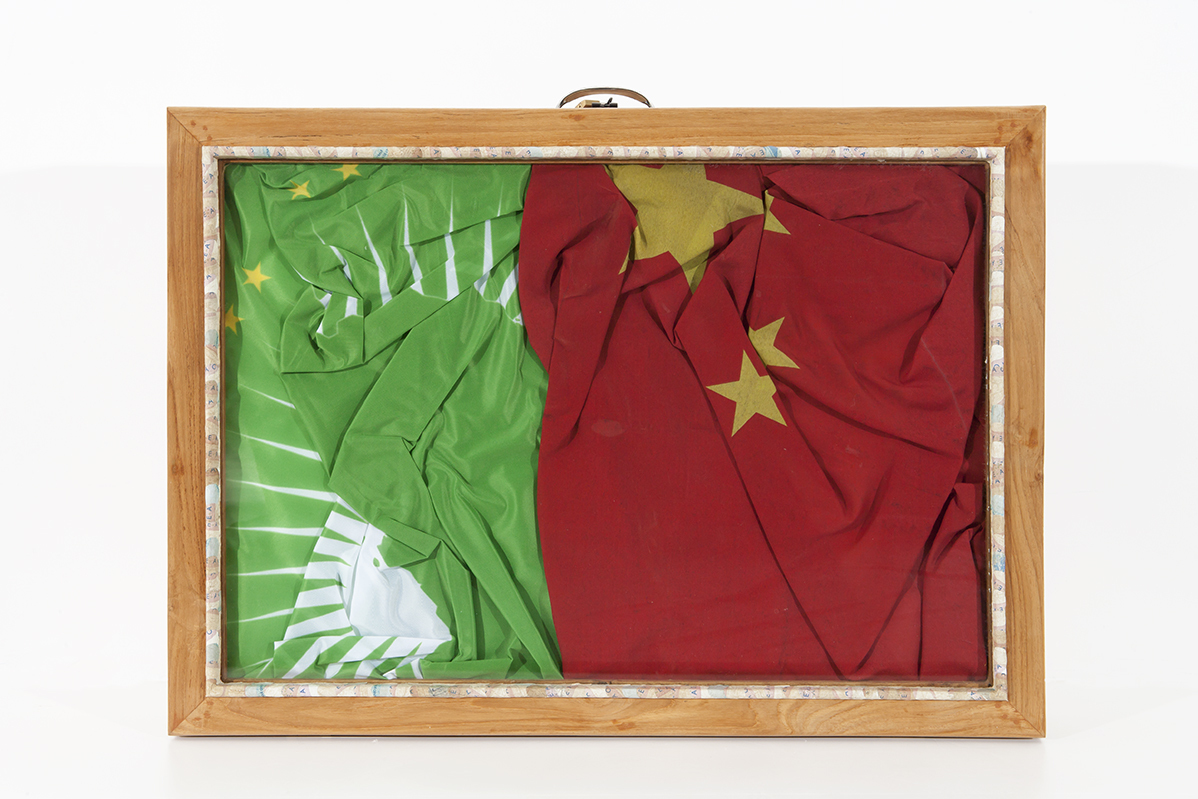
Diplomatique (Chine Afrique), 2013. Image: © Meschac Gaba. Courtesy of Stevenson, Amsterdam, Cape Town and Johannesburg.
Gaba, who was born and raised in the capital of Benin, Cotonou, but who later went to art school in the Netherlands (and now shares time between the two places) embraces and explores his diasporic, transnational identity.
Barben explains that it was when Gaba left Benin for his education in Europe that he was “made aware of his own ‘African-ness’. And it seems that a number of West African artists have encountered that when they are confronted with racism and xenophobia.”
Perhaps you have had the experience of travelling abroad and realising that you have an accent. When you’re at home with your family and your peers, everybody talks the same, but when you are somewhere new, an outsider, you realise the material signs that mark where you are from, that make you different.
But it’s also this reductive idea of “African” and what it means to be an “African artist” that Gaba unpacks and undermines. An exhibition plaque on the wall of the Stevenson includes a quote by Simon Njami that sums it up succinctly: “Gaba, while considering himself a citizen of the world and acting as one, refuses to fall into the globalisation trap. At a time when some would have us believe we have entered the era of post-ethnicity, a jarring intellectual absurdity — his work wears its rootedness proudly.”
Gaba himself puts it like this: “there is no originality in my work other than my own. In this sense, I have no artistic nationality, I love Benin, but that doesn’t mean my inspiration ends there.” Just as our background shapes us, certainly, we are all much more than where we are from.
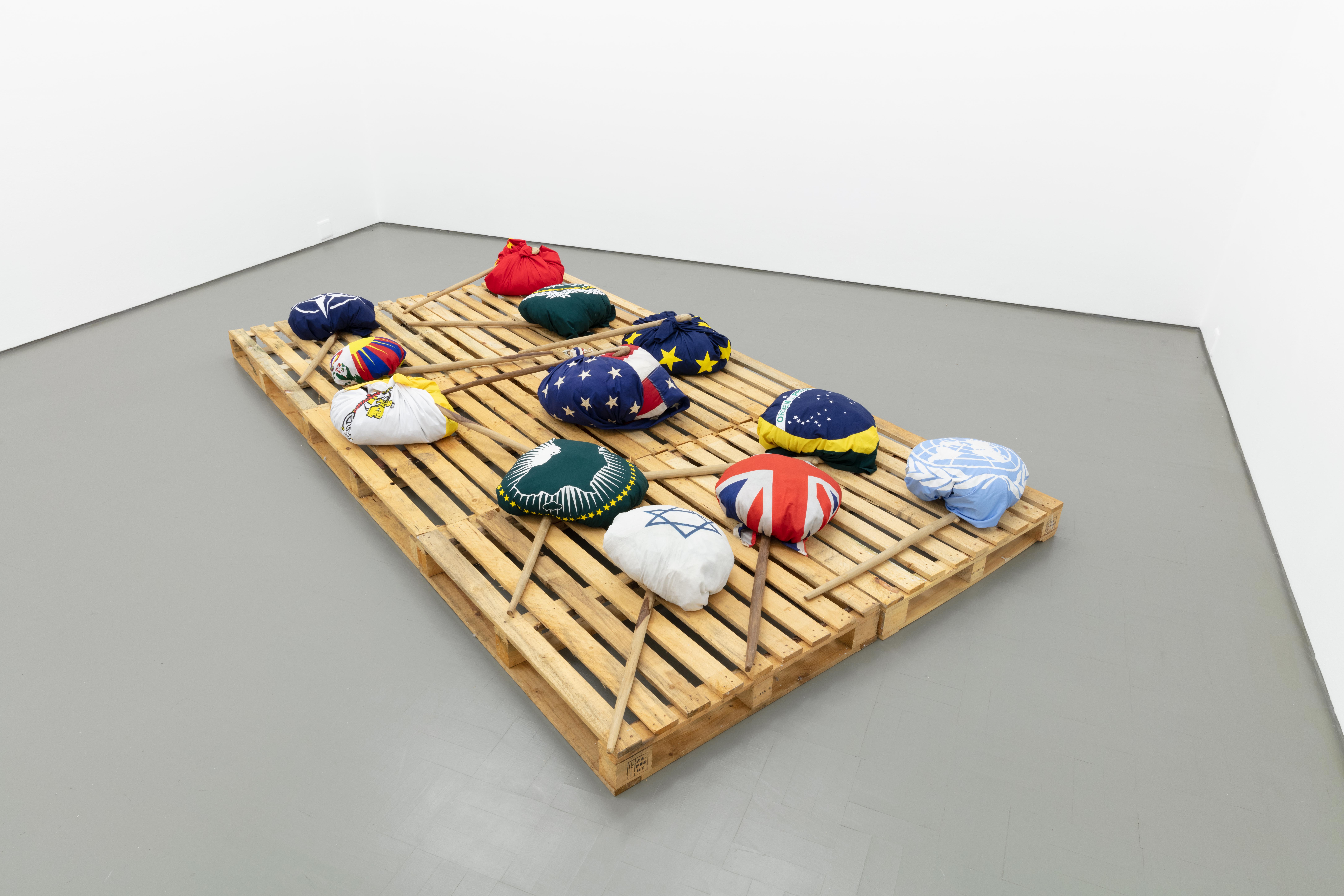
Perfect Voyage, 2012. © Meschac Gaba. Courtesy of Stevenson, Amsterdam, Cape Town and Johannesburg.
Stuart Hall said that the problem is not “who we are or where we came from, so much as what we might become, how we have been represented, and how that bears on how we might represent ourselves”.
The cold, hard reality, however, is that this universal humanity that transcends borders, nationalism, even globalisation — that is to say the reality that we are all human beings made up of a million different influences and experiences from every direction — is very often not recognised by global systems of control.
Human bodies are constantly barred from certain places, depending on the passport that a person may hold. Why is it that South Africans have to pay over R2,000 and go through an extensive visa application process to enter the United States, while UK and European citizens can enter visa-less? And that was pre-pandemic.
Nothing says this more poignantly than the piece Memorial for Drowned Refugees (2016), which sits, elegant in its minimalism, in a corner of the Stevenson gallery space. Consisting of a pile of grey blankets and three lamps, the piece is a funerary object of sorts. Barben explains that “he [Gaba] suggests that it’s based on what happens in Beninese culture when fishermen drown at sea. There would be these sorts of monuments or memorials left on the beach. [Memorial for Drowned Refugees] was made at the time when there was mass-exodus and migration to Europe, and people dying in the Mediterranean.”
By bringing attention to human beings who drowned after travelling great distances, having fled their countries of origin, and whose global citizenry was unfairly ignored (resulting in dire consequences), Gaba asks a big question: who has access to this globalised world and who does not? Why do we place more importance on certain people and places? Whose bodies and lives do we value?
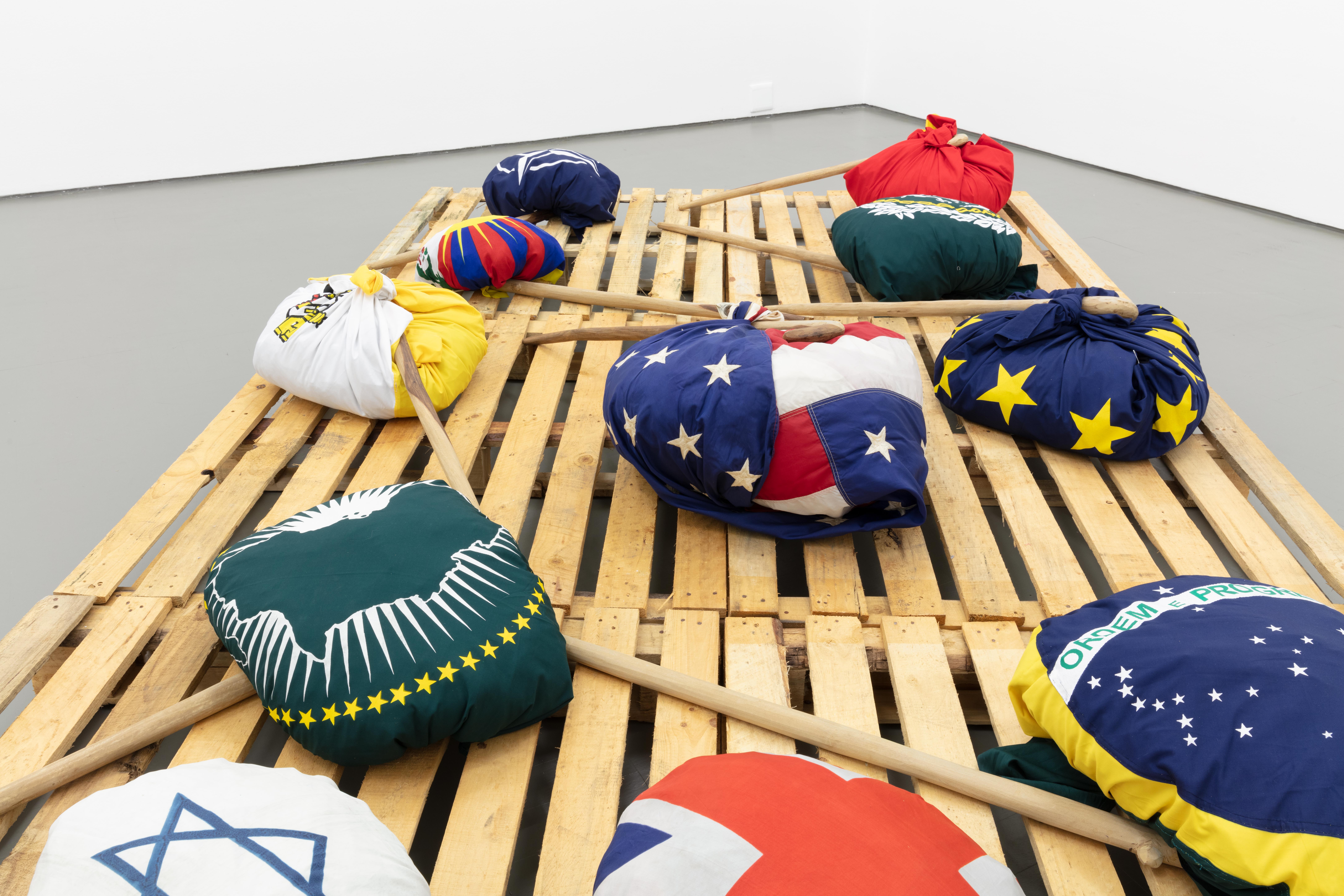
Perfect Voyage, 2012. © Meschac Gaba. Courtesy of Stevenson, Amsterdam, Cape Town and Johannesburg.
Value here is the keyword and has played a central role in Gaba’s thinking throughout his career. And while Stevenson’s previous showcase of Gaba’s work, Money Money Money, was more explicitly exploring this theme, it’s impossible to escape when talking about globalisation.
To quote Gaba once more, “money is the sinews of war; it’s the chief. You see, I don’t like talking about colonisation, but at the same time money can colonise. Maybe that’s why I use money, because I refuse to use the word colonisation. Besides, money travels.”
That it does, not only within the world but also throughout most of Gaba’s works. In many of his pieces, namely Zimbabwe Survival and the Diplomatique series, Gaba makes use of the CFA Franc as a material, moulding it into his installations like any other form of paper. A currency used in Francophone Western Africa, the CFA Franc suffered a radical devaluation in the 1980s, making the money totally worthless.
The story goes that Gaba, walking around Cotonou, came across a bag full of decommissioned CFA banknotes, shredded, like confetti. “I told my friend ‘I found the gold. I found the million. I found a lot of money’.” His friend responded, “you are mad. It is nothing.”
Ironically, this nothing money, a currency worth less than the very paper it was printed on, became an iconic part of Gaba’s conceptual work, which has catapulted him into fame, at least in the art world sphere.
This point is brought home most effectively in Money Money Money, (still available for viewing on Stevenson Gallery’s website) in a piece called Colours of Cotonou, a series of frames made out of the same CFA notes that encapsulates seemingly arbitrary objects. Some left totally empty, and some framing wallpaper, trousers, or just background colours that Gaba found in Cotonou, it forces viewers to focus on the frames themselves rather than the content within them.
This could be read as a metaphor for a larger frame, the frame of systems of value in the art world. In a typical postmodernist critique, Gaba is asking us “what constitutes art?” Why do we value (some of) it so highly? What role does the frame (the gallery, the museum) have in creating this value?
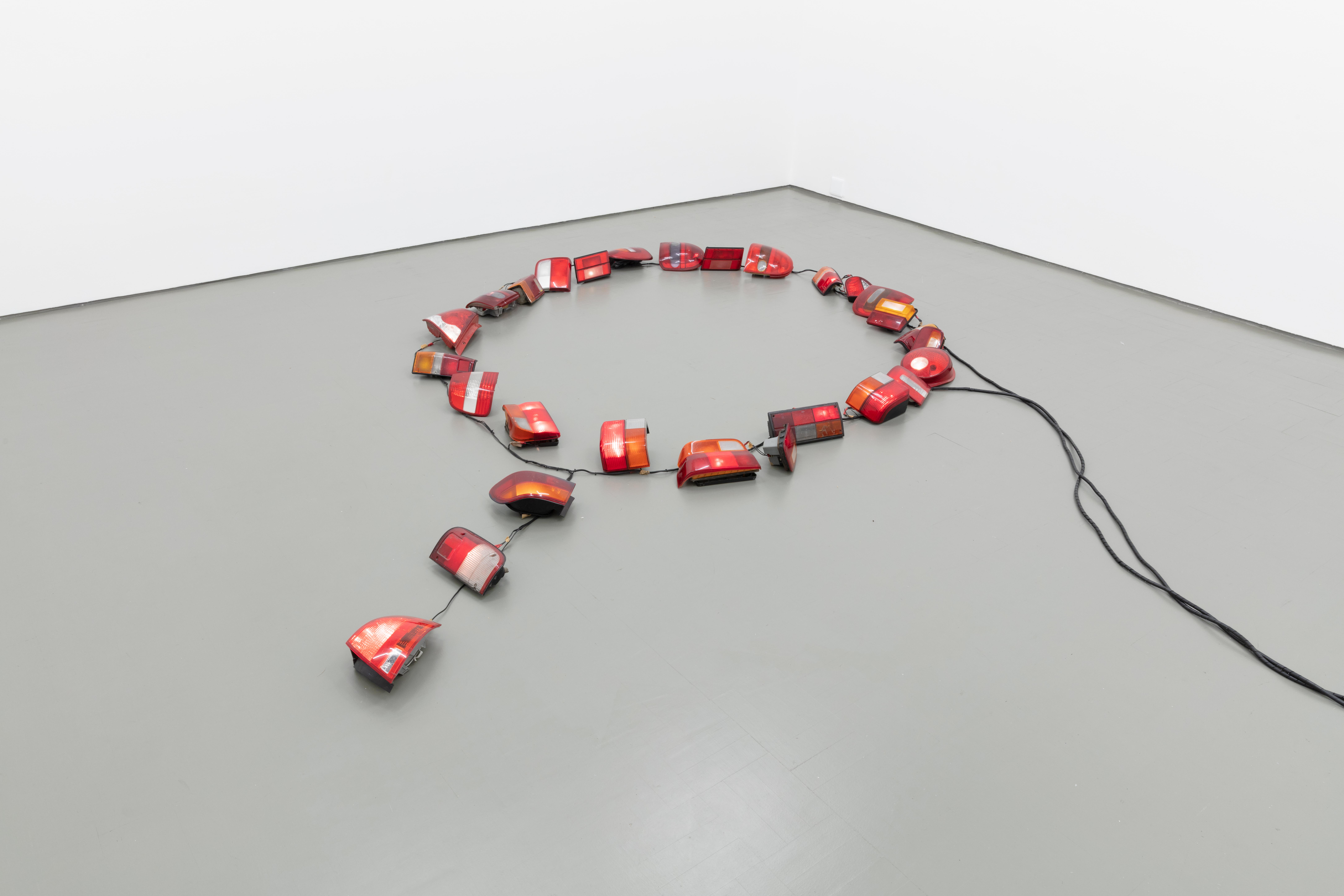
Detresse, 2017. © Meschac Gaba. Courtesy of Stevenson, Amsterdam, Cape Town and Johannesburg.
But by using the decommissioned notes and framing little fragments of his Cotonou experience (“when you first see the work, the pastels don’t look very African, but nobody can complain because I did not make them up myself — I found them in Benin,” says Gaba) he takes it to a new level. We begin to think about the absurdity of art value in a truly global context. In other words, we see the absurdity of “art” framed by the experience of the Global South.
The recent hype around the NFT and cryptocurrency in general seems bizarre when thought of in parallel with the experience of radical devaluation of currency. How can an entirely abstract piece of work (that you can’t even come into physical contact with) fetch $69-million, while people in countries like Zimbabwe load cash in a wheelbarrow to buy bread? The world is a strange and unequal place.
Speaking of Zimbabwe, in Zimbabwean Survival, Gaba places a minefield of little birds, crafted by a Zimbabwean tradesman who was selling his work on the streets of Kalk Bay in a section of the Stevenson Gallery. The piece is about Zimbabwean migrants, struggling to make ends meet in South Africa, but it’s also about making art out of everyday things.
According to Berben, Gaba was sourcing material for another piece when they came across this Zimbabwean tradesman. “He was just so inspired on the spot that he bought them all and recreated them as art, not craft.”
Gaba pokes fun at the system from within the system itself. His pieces — themselves framed by the museum — ask us to consider why we pay mind to them here and not elsewhere? In Barben’s opinion, “maybe it wasn’t so much critiquing the kind of game at play, but asking questions and prompting reflection.”
Whether questioning the concept of art itself, systems of value in the world, or what it means to be a global citizen, Gaba’s playful prodding truly brings to light some deeply disturbing power imbalances in the world. The asymmetrical relationship between the Global North and the Global South is brought to the fore.
This is a tough pill to swallow, one that Gaba feeds to us with his whimsical sense of humour. A spoonful of sugar makes the medicine go down, said Mary Poppins. DM/ML
















 Become an Insider
Become an Insider
Comments - Please login in order to comment.